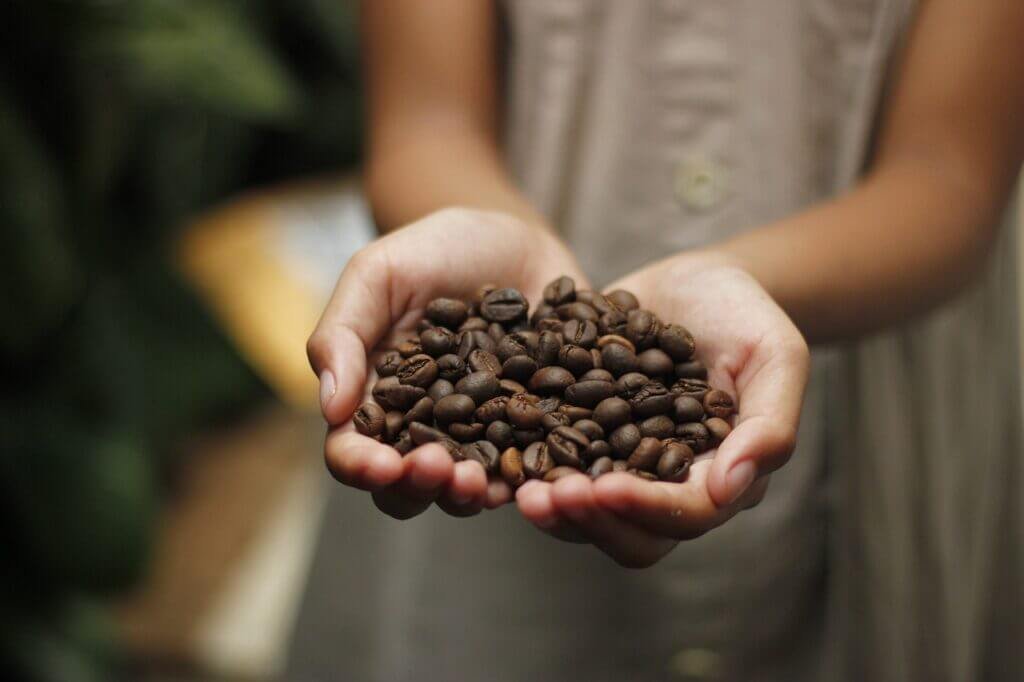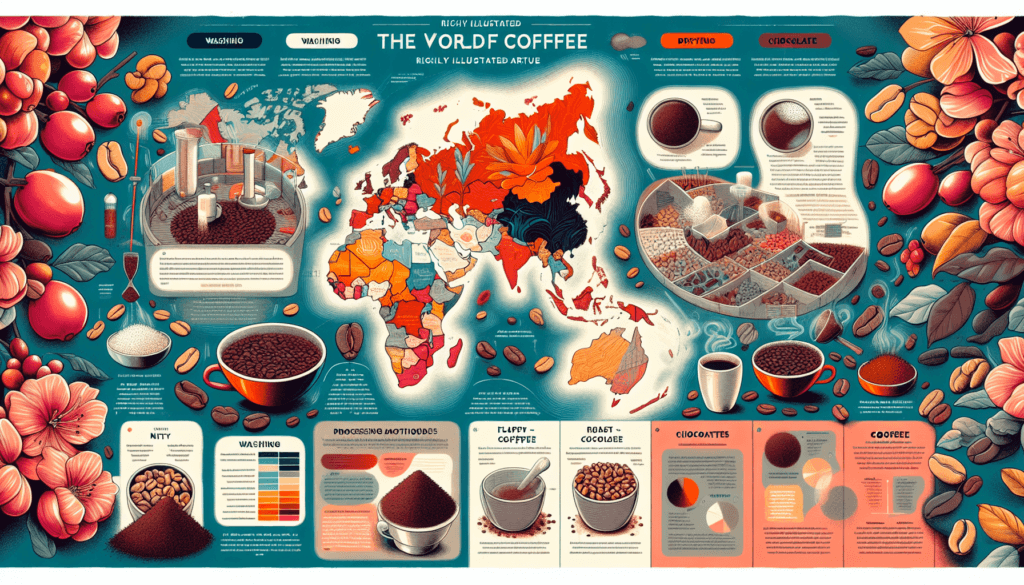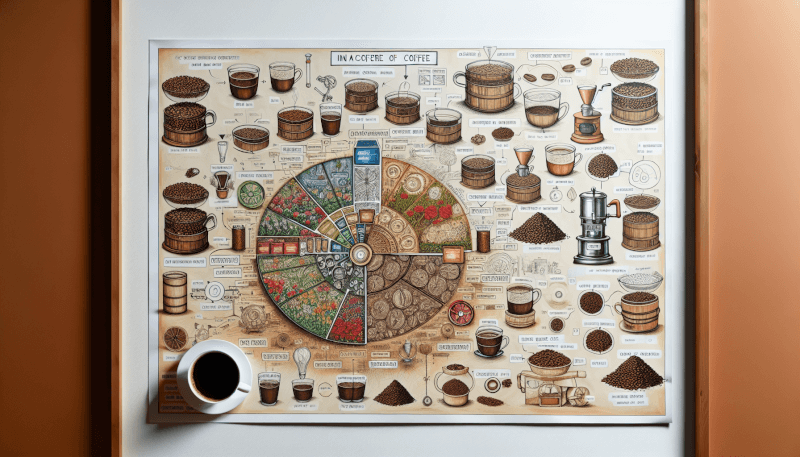If you’re a coffee lover, then you’ve probably wondered which coffee type is truly the best quality. With so many options available on the market, it can be overwhelming to determine which one is worth your time and money. In this article, we’ll explore the different factors that contribute to coffee quality and help you make an informed decision about which type of coffee is considered the best. Whether you prefer a bold and rich flavor or a smooth and subtle taste, we’ve got you covered. So sit back, grab your favorite mug, and let’s embark on a journey to discover the best coffee type out there.

Arabica vs Robusta Coffee
What is Arabica coffee?
Arabica coffee, scientifically known as Coffea arabica, is the most popular and widely consumed type of coffee in the world. It is grown in regions with higher altitudes, such as Latin America, Africa, and the Caribbean. Arabica beans are known for their delicate flavor and aroma, offering a smooth and nuanced taste experience.
What is Robusta coffee?
Robusta coffee, scientifically known as Coffea canephora, is the second most commonly produced coffee variety globally. It is grown in regions with lower altitudes, including countries like Vietnam, Brazil, and Indonesia. Robusta beans have a more robust and bitter taste, often described as earthy and grainy.
Differences in taste
When it comes to taste, Arabica and Robusta coffees have distinct characteristics. Arabica coffee is known for its complex flavor profile, which may include notes of fruit, chocolate, floral undertones, or even wine-like acidity. On the other hand, Robusta coffee tends to have a stronger and more bitter taste, with hints of nutty or woody flavors.
The difference in taste is primarily attributed to variations in their chemical composition. Arabica contains a lower caffeine content and higher levels of sugars and lipids, contributing to its more delicate and nuanced flavors. Robusta, on the other hand, typically has twice the amount of caffeine and a higher concentration of chlorogenic acids, resulting in its more robust and bitter taste.
Differences in caffeine content
One noticeable difference between Arabica and Robusta coffee lies in their caffeine content. Arabica beans generally contain about 1.2% caffeine, while Robusta beans have higher caffeine levels of around 2.2%. This disparity stems from genetic factors and the growing conditions of each variety.
The higher caffeine content in Robusta coffee serves as a natural defense mechanism against pests and diseases since caffeine acts as a natural pesticide. This higher caffeine content also contributes to the stronger and more immediate stimulating effect often associated with Robusta coffee.
Single-Origin vs Blend Coffee
What is single-origin coffee?
Single-origin coffee refers to coffee beans that are sourced from a specific geographic area, such as a particular farm, region, or country. These beans are carefully cultivated and harvested, allowing for the expression of the unique flavor profiles and characteristics inherent to that specific origin. Single-origin coffees are highly regarded for their traceability and the ability to showcase the distinct nuances of a particular growing region.
What is blend coffee?
Blend coffee, as the name suggests, is a combination of beans from different origins. Coffee roasters create blends by mixing beans with varying flavor profiles to achieve a desired taste and consistency. Blending can help strike a balance between different flavors, enhance complexity, and achieve a more consistent taste experience.
Distinct flavors and profiles
Single-origin coffees offer a chance to savor the unique flavors and profiles of specific regions. Each coffee-growing region has its own soil, climate, and altitude, which impart distinct characteristics to the beans. For example, Ethiopian coffees are often recognized for their floral and fruity notes, while Brazilian coffees may exhibit nutty and chocolatey flavors.
In contrast, blend coffees combine beans from different regions to create a well-rounded and balanced flavor profile. By blending different origins, the roaster can achieve a harmonious combination of flavors, resulting in a more dynamic and complex cup of coffee.
Consistency and balance
While single-origin coffees showcase the exceptional qualities of a specific region, their flavor profiles can vary from harvest to harvest due to factors like climate and processing methods. Blend coffees, on the other hand, offer a consistent flavor profile as the roaster can ensure a balance of flavors by carefully blending different beans. This consistency appeals to those who prefer a reliable and predictable taste experience in their daily cup of coffee.

Fair Trade vs Conventional Coffee
What is fair trade coffee?
Fair trade coffee is a certification system that ensures coffee farmers receive fair compensation for their work and are provided with better working conditions. Fair trade organizations aim to promote sustainable practices, empower farmers, and improve living standards for coffee-growing communities. By purchasing fair trade coffee, consumers support ethical and transparent supply chains.
What is conventional coffee?
Conventional coffee refers to coffee that is produced through standard agricultural practices without any specific certifications or commitments to fair trade principles. Although conventional coffee is the most widely available and consumed type of coffee, its production may involve exploitative labor practices, environmental degradation, and low prices for farmers.
Environmental impact
Fair trade coffee promotes environmentally sustainable practices by encouraging organic farming methods, biodiversity conservation, and the reduction of chemical inputs. Fair trade certification requires coffee farmers to adhere to specific guidelines, including minimizing the use of agrochemicals and promoting the conservation of natural resources.
In contrast, conventional coffee farming often involves the use of synthetic fertilizers, pesticides, and herbicides. These chemicals can have harmful effects on the environment, polluting soil and water sources while also posing health risks to farmers and wildlife.
Fair treatment of farmers
Fair trade coffee ensures that farmers receive fair prices for their harvest, which helps provide them with a stable income and improve their livelihoods. Fair trade certification also includes additional premiums that are invested in community projects, such as education, healthcare, and infrastructure development.
Conventional coffee, however, is subject to market fluctuations that can result in unpredictable income for farmers. Without fair trade guarantees, farmers may struggle to cover production costs and earn a sustainable income, ultimately leading to poverty and economic instability within coffee-growing regions.
Shade-Grown vs Sun-Grown Coffee
What is shade-grown coffee?
Shade-grown coffee is cultivated under a canopy of trees, mimicking the coffee plants’ natural habitat in forest ecosystems. The shade provided by trees offers numerous benefits, including temperature regulation, insect control, and moisture retention. Shade-grown coffee farms promote biodiversity, providing habitat for birds, insects, and other wildlife species.
What is sun-grown coffee?
Sun-grown coffee, also known as full-sun or open-grown coffee, is cultivated in direct sunlight without the presence of a shaded canopy. Sun-grown coffee farms often involve clearing large areas of forest to make way for coffee cultivation. This method allows for increased productivity and ease of mechanized farming practices.
Impact on the environment
Shade-grown coffee farms have a significantly smaller environmental footprint compared to sun-grown coffee farms. The forest canopy provides natural pest control, reducing the need for chemical inputs. The shade also helps maintain soil quality and moisture levels, preventing erosion and promoting long-term sustainability.
In contrast, sun-grown coffee farming contributes to deforestation and habitat loss. Clearing forests for coffee plantations disrupts ecosystems, displaces wildlife, and reduces biodiversity. Sun-grown coffee farming often requires the use of synthetic fertilizers, pesticides, and herbicides to compensate for the lack of natural pest control measures.
Flavor and quality
Shade-grown coffee is often believed to produce superior flavor and quality compared to sun-grown coffee. The slower maturation process under the shaded canopy allows the coffee cherries to develop more complex flavors, often resulting in a more nuanced and flavorful cup of coffee. The presence of diverse plant species within the shade canopy contributes to the unique profiles of shade-grown coffees.
Sun-grown coffee, while generally producing higher yields, may lack the distinctive flavors and complexity found in shade-grown varieties. The faster maturation process and increased exposure to direct sunlight can result in a more one-dimensional flavor profile and potentially contribute to a lower cup quality.

Organic vs Non-Organic Coffee
What is organic coffee?
Organic coffee refers to coffee that is produced without the use of synthetic fertilizers, pesticides, herbicides, or genetically modified organisms (GMOs). Organic coffee farms adhere to strict organic farming standards, promoting biodiversity, soil health, and the overall ecological balance. Organic certification guarantees that the coffee has been grown and processed in compliance with recognized organic regulations.
What is non-organic coffee?
Non-organic coffee, often referred to as conventional coffee, is produced using conventional farming practices that may involve the use of synthetic chemicals, such as synthetic fertilizers, pesticides, and herbicides. Non-organic coffee farming does not adhere to the same strict regulations as organic coffee farming, resulting in potential negative environmental and health impacts.
Pesticide and chemical use
One of the primary differences between organic and non-organic coffee lies in the use of pesticides and chemicals. Organic coffee farming restricts the use of synthetic chemicals and encourages natural pest control methods, such as companion planting and beneficial insects. This reduces the exposure of farmers, consumers, and the environment to potentially harmful substances.
Non-organic coffee farming often relies on synthetic chemicals to enhance productivity and combat pests and diseases. The use of these chemicals can have adverse effects on human health, contaminate soils and waterways, and impact biodiversity.
Health and environmental considerations
Organic coffee offers several health and environmental benefits. As no synthetic chemicals are used in the production process, organic coffee has lower levels of pesticide residues, which may be beneficial for consumer health. Additionally, organic farming practices promote soil fertility and the conservation of local ecosystems, contributing to long-term sustainability and environmental preservation.
Non-organic coffee, in contrast, may contain pesticide residues that can pose health risks to both farmers and consumers. The excessive use of synthetic chemicals in non-organic coffee farming also leads to soil degradation, water pollution, and reduced biodiversity.
Washed vs Natural Processing
What is washed processing?
Washed processing, also known as wet processing, is a method that involves removing the outer skin and pulp of the coffee cherry before drying the beans. After harvesting, the cherries are pulped to separate the fruit from the coffee seeds. The seeds are then soaked in water to ferment and remove any remaining fruit residues, and finally, dried to an appropriate moisture content.
What is natural processing?
Natural processing, also referred to as dry processing, is a method where the coffee cherries are dried whole, with the fruit still intact. The cherries are spread out in thin layers on raised beds or patios to dry under the sun until the desired moisture content is achieved. Once dried, the cherries are milled to remove the fruit and parchment layers, revealing the coffee beans.
Flavor profiles
Washed and natural processing methods impart distinct flavor profiles to the coffee beans. Washed coffees often exhibit cleaner and brighter flavors with more pronounced acidity. The removal of the fruit during fermentation limits the exposure to the natural sugars, resulting in a more acidic and citrusy taste.
In contrast, natural processed coffees tend to have a fruit-forward flavor profile, often characterized by pronounced sweetness, heavy body, and complex fruit notes. The extended contact between the coffee beans and the fruit during drying allows the sugars to permeate into the beans, enhancing their natural flavors.
Impact on coffee quality
Both the washed and natural processing methods can produce high-quality coffee when executed with care and precision. The choice of processing method is often influenced by factors such as climate, local traditions, and desired flavor profiles. While washed processing is favored for its cleaner taste and acidity, natural processing offers a unique and vibrant cup experience, highlighting the inherent flavors of the coffee fruit.
The selection of the processing method plays a significant role in the overall quality of the coffee. Skill and expertise in executing each method are key to ensuring optimum fermentation, drying, and handling practices, which ultimately contribute to the final coffee quality.

High Altitude vs Low Altitude Coffee
What is high altitude coffee?
High altitude coffee refers to coffee that is grown at elevations above 3,000 feet (900 meters) above sea level. The cooler temperatures and distinct climatic conditions at higher altitudes contribute to slower coffee cherry maturation and denser beans. Coffee grown at high altitudes is often associated with enhanced flavor complexity, increased acidity, and desirable qualities sought after by coffee enthusiasts.
What is low altitude coffee?
Low altitude coffee is grown in regions where the elevation is below 3,000 feet (900 meters) above sea level. The warmer temperatures and tropical climates found at lower altitudes contribute to faster cherry maturation, resulting in beans that may be larger but less dense. Low altitude coffee is often associated with milder flavors, reduced acidity, and a smoother taste profile.
Unique flavor characteristics
High altitude coffee benefits from the cooler temperatures and longer growing periods associated with higher elevations. The slow development of the coffee cherries allows for more concentrated flavors to develop, giving high altitude coffees a distinct and vibrant taste profile. These coffees often exhibit pronounced acidity, brighter and more complex flavors, and a desirable balance.
Low altitude coffee, on the other hand, tends to have milder flavors with less acidity. The warmer climates and faster maturation process often lead to beans with less time to develop the complexity and intricacy found in high altitude coffees.
Growing challenges
Coffee cultivation at high altitudes presents unique challenges for farmers. The cooler temperatures and increased exposure to pests and diseases require precise cultivation techniques and careful pest management. Additionally, the higher altitudes make it more difficult for machinery to access and work in the coffee fields, which often necessitates manual labor for harvesting and maintenance.
Low altitude coffee farming, while not without its own challenges, benefits from easier access and a more favorable climate for mechanized farming practices. The faster maturation process also contributes to higher yields, making low altitude coffee farming potentially more economically viable.
Certified vs Non-certified Coffee
What is certified coffee?
Certified coffee refers to coffee that has undergone a certification process to ensure certain ethical and sustainable standards are met. There are various certification programs available, such as Fair Trade, Rainforest Alliance, and Organic certifications. These certifications provide consumers with assurance that the coffee they purchase has met specific criteria related to environmental, social, and economic considerations.
What is non-certified coffee?
Non-certified coffee refers to coffee that has not undergone any specific certification process. This coffee may still meet certain standards or be produced in line with ethical and sustainable practices, but it lacks the official recognition and verification provided by certification programs.
Ethical and sustainable practices
Certified coffee guarantees adherence to specific ethical and sustainable practices. For example, Fair Trade certification ensures fair prices and better working conditions for farmers, while Rainforest Alliance certification requires environmental conservation and worker welfare. Organic certification guarantees that the coffee has been produced without synthetic chemicals. By choosing certified coffee, consumers can support farmers and farms that prioritize sustainability, fair treatment, and responsible practices.
Non-certified coffee may also be produced ethically and sustainably, but without certification, consumers have less visibility and assurance regarding these aspects. In some cases, non-certified coffee may still be produced using ethical practices, as smaller farmers or cooperatives may not have the resources necessary to undergo certification.
Quality assurance
Certified coffee programs often include rigorous quality assurance measures to ensure that the coffee meets specific standards and maintains consistent quality. Certification programs frequently involve sampling, inspections, and audits to verify compliance. This ensures that consumers can have confidence in the quality and reliability of the certified coffee they purchase.
Non-certified coffee does not undergo the same level of quality assurance procedures. While this does not necessarily mean that non-certified coffee is of lower quality, it does mean that consumers may need to rely on other factors, such as reputation, reviews, or personal taste preferences when choosing non-certified coffee.

Specialty vs Commercial Coffee
What is specialty coffee?
Specialty coffee represents the highest quality category of coffee available. These coffees score 80 points or above on a 100-point scale according to the Specialty Coffee Association (SCA) standards. Specialty coffee is often sourced from specific regions, farms, or microlots, and there is a strong emphasis on factors such as elevation, varietal, and processing methods. Specialty coffee is typically considered more carefully crafted and meticulously produced, resulting in an exceptional coffee experience.
What is commercial coffee?
Commercial coffee, sometimes referred to as commodity coffee, is produced on a larger scale with a primary focus on meeting market demand. It often includes generic blends and mass-produced coffee products designed for broader consumer appeal. Commercial coffee is typically more widely available, less expensive, and may not prioritize the same level of quality, traceability, or flavor complexity as specialty coffee.
Quality control
Specialty coffee places a significant emphasis on quality control at every step of the production process. From selective sourcing and meticulous roasting to precise brewing methods, specialty coffee aims to deliver a consistently exceptional coffee experience. Quality control practices ensure that each cup of specialty coffee meets or exceeds the strict standards set by the SCA, resulting in a premium product.
Commercial coffee, while still subject to quality control measures, may prioritize efficiency and consistency over top-tier quality. The focus is often on delivering a standardized taste experience that appeals to a broad consumer base rather than highlighting unique flavors or the specialty characteristics found in carefully curated coffees.
Customer experience and satisfaction
Specialty coffee offers a unique and personalized coffee experience, appealing to individuals who appreciate the complexities and nuances of coffee flavor profiles. With a focus on quality, traceability, and craftsmanship, specialty coffee aims to deliver a memorable sensory experience that satisfies discerning coffee lovers.
Commercial coffee typically aims to provide a convenient and consistent cup of coffee that caters to the broader consumer market. While commercial coffee may lack the same level of complexity and uniqueness found in specialty coffee, it often offers a familiar and predictable taste experience that meets the preferences of a wider range of coffee drinkers.
Whole Bean vs Ground Coffee
What is whole bean coffee?
Whole bean coffee refers to coffee beans that are sold in their intact, unbroken form. These beans are usually hand-picked, dried, and then sold with their protective outer layer or parchment intact. Whole bean coffee provides an opportunity for coffee enthusiasts to grind the beans fresh, just before brewing, to maximize flavor and aroma.
What is ground coffee?
Ground coffee is coffee that has been processed and finely ground into smaller particles suitable for brewing. Ground coffee is convenient and ready to use, eliminating the need for a coffee grinder. It is commonly available in various coarseness levels to suit different brewing methods, such as espresso, pour-over, or French press.
Freshness and flavor retention
Whole bean coffee offers superior freshness and flavor retention compared to pre-ground coffee. Grinding the beans just before brewing helps preserve the volatile aromatic compounds present in coffee, resulting in a more flavorful cup. By grinding whole beans on-demand, coffee enthusiasts can experience the full spectrum of flavors and aromas that diminish quickly after grinding.
Pre-ground coffee, while convenient, is more vulnerable to oxidation and flavor degradation due to increased exposure to air. The release of carbon dioxide during the grinding process can also contribute to the loss of aroma and flavor over time. While pre-ground coffee can still provide a decent cup, it may not offer the same level of freshness and complexity as freshly ground coffee.
Convenience
Ground coffee offers convenience and ease of use, making it a popular choice for consumers seeking a quick and hassle-free brewing experience. With pre-ground coffee, there is no need for additional equipment, such as a coffee grinder, as the coffee is ready to be brewed right out of the package. This convenience appeals to those who value simplicity and efficiency in their coffee routine.
Whole bean coffee, while requiring an extra step of grinding, offers greater flexibility and control over the brewing process. It allows coffee enthusiasts to experiment with different grind sizes and brewing methods to achieve their desired flavor profiles. While it may require more time and effort, the flexibility and potential for a superior cup of coffee make whole bean coffee a favored choice among coffee enthusiasts.
In conclusion, the world of coffee offers a diverse array of choices, each with its own unique characteristics and qualities. Whether you prefer the delicate flavor of Arabica or the robustness of Robusta, the distinctiveness of single-origin or the consistency of blends, or the ethical sourcing of fair trade or the affordability of conventional coffee, there is a coffee type that suits your taste and values. The decision between shade-grown or sun-grown, organic or non-organic, washed or natural processed coffee depends on your preference for flavor, environmental considerations, and health concerns. Similarly, the choice between high altitude or low altitude coffee, certified or non-certified coffee, specialty or commercial coffee, or whole bean or ground coffee ultimately boils down to personal preferences, convenience, and the desired coffee experience. So go ahead, explore the world of coffee and discover the perfect brew that brings joy to your mornings and moments of delight throughout your day. Happy coffee drinking!


